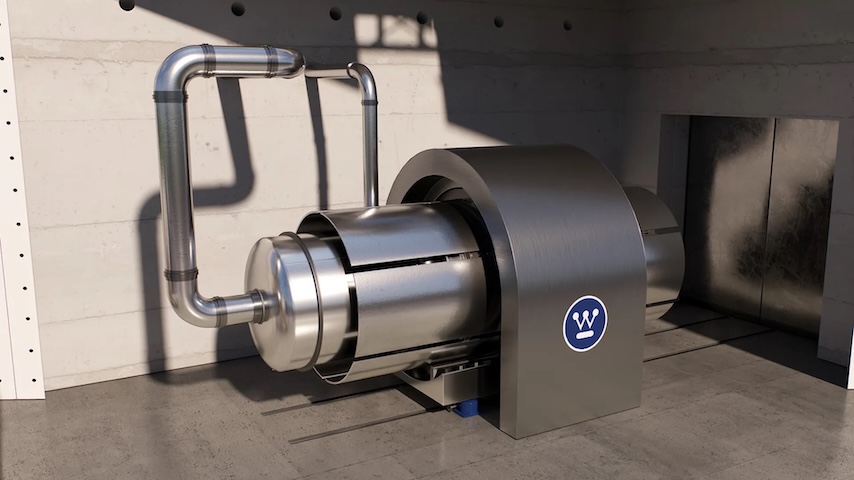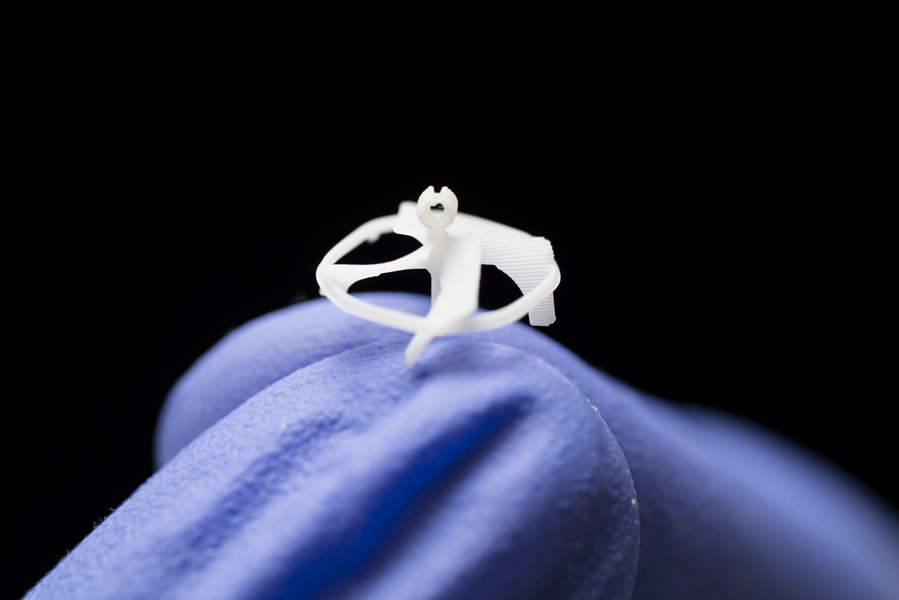A Microreactor Partnership
A Microreactor Partnership


An expanded collaboration will see McMaster University and Westinghouse moving the latter’s microreactor technology toward commercialization.
Microreactors offer a range of compelling advantages, particularly for organizations and regions that require reliable, independent, and low-carbon power. These small, factory-built nuclear reactors—typically generating between 1 and 20 megawatts—are designed for transportability, minimal on-site infrastructure, and long operational lifespans.
To that end, McMaster University and Westinghouse are deepening their research partnership to advance the eVinci microreactor toward commercialization.
Under newly established agreements, the two organizations will continue collaborative R&D activities, with a focus on material irradiation and examination studies critical to microreactor development. This builds on a relationship that began in 2022 and now includes an extended scope of work to generate key testing data and validate reactor designs for licensing approval.
The university is enhancing its reactor testing infrastructure by developing a high-temperature irradiated test rig that will support Westinghouse in confirming design parameters for the eVinci reactor.
Try This Quiz: How Much Do You Know About Small Modular Reactors?
McMaster has already completed foundational research, including a comprehensive material properties review and the creation of technical handbooks. These resources are intended to guide engineering design and future testing plans, contributing to the microreactor’s technical maturity and regulatory readiness.
The collaboration supports McMaster’s broader goal of creating a net-zero campus and exploring clean energy solutions for remote and off-grid applications. Westinghouse’s eVinci microreactor, a compact and scalable nuclear system, is designed to provide carbon-free power and heat in locations ranging from industrial sites and remote communities to space exploration missions. Leveraging McMaster’s research reactor expertise and advanced facilities, the partnership aims to accelerate the safe deployment of next-generation nuclear technologies in support of clean energy innovation.
“McMaster University is known as Canada’s Nuclear University,” said John Preston, a professor of engineering physics and strategic advisor for nuclear research and education at McMaster. “We operate the largest research reactor in the country and carry out a wide range of research—materials irradiation studies, neutron activation, radiography, isotope production—and work with many of the operators, vendors, and suppliers in the nuclear industry. The recent MOU with Westinghouse is a multifaceted agreement to work with them as they develop and deploy the eVinci Microreactor.”
A microreactor is a potential power source for microgrids and facilities such as data centers, which consume vast amounts of energy. The energy load on a conventional grid may be too great for power companies to keep up with, so an independent microreactor may serve as a viable solution and is advantageous in comparison to a larger, conventional reactor.
Discover the Benefits of ASME Membership
While microreactors offer the potential for clean, resilient, always-on power, ideally suited to the high energy demands of data centers, their deployment is currently limited by regulatory, integration, safety, and cost barriers. Overcoming these will require coordinated progress in policy, technology, and public engagement.
"The eVinci Microreactor is a 15 MWth, 5MWe design,” Preston said. "It is a truly modular design with the reactor being assembled in a factory environment and delivered to site as a unit.”
Multiple eVinci’s can be co-located to meet a site’s power needs and deployment could potentially be much faster than a conventional reactor that is constructed on site, he continued. It can also provide power for more than eight years without refueling.
“Westinghouse foresees the eVinci as a solution to a wide range of challenges ranging from remote communities to data centers,” Preston said. “McMaster is interested in working with Westinghouse to facilitate bringing their innovative product to market and codevelop technologies for maximizing the value of the eVinci in Canadian applications such as northern communities.”
Jim Romeo is a technology writer in Chesapeake, Va.
To that end, McMaster University and Westinghouse are deepening their research partnership to advance the eVinci microreactor toward commercialization.
Under newly established agreements, the two organizations will continue collaborative R&D activities, with a focus on material irradiation and examination studies critical to microreactor development. This builds on a relationship that began in 2022 and now includes an extended scope of work to generate key testing data and validate reactor designs for licensing approval.
The university is enhancing its reactor testing infrastructure by developing a high-temperature irradiated test rig that will support Westinghouse in confirming design parameters for the eVinci reactor.
Try This Quiz: How Much Do You Know About Small Modular Reactors?
McMaster has already completed foundational research, including a comprehensive material properties review and the creation of technical handbooks. These resources are intended to guide engineering design and future testing plans, contributing to the microreactor’s technical maturity and regulatory readiness.
The collaboration supports McMaster’s broader goal of creating a net-zero campus and exploring clean energy solutions for remote and off-grid applications. Westinghouse’s eVinci microreactor, a compact and scalable nuclear system, is designed to provide carbon-free power and heat in locations ranging from industrial sites and remote communities to space exploration missions. Leveraging McMaster’s research reactor expertise and advanced facilities, the partnership aims to accelerate the safe deployment of next-generation nuclear technologies in support of clean energy innovation.
“McMaster University is known as Canada’s Nuclear University,” said John Preston, a professor of engineering physics and strategic advisor for nuclear research and education at McMaster. “We operate the largest research reactor in the country and carry out a wide range of research—materials irradiation studies, neutron activation, radiography, isotope production—and work with many of the operators, vendors, and suppliers in the nuclear industry. The recent MOU with Westinghouse is a multifaceted agreement to work with them as they develop and deploy the eVinci Microreactor.”
A microreactor is a potential power source for microgrids and facilities such as data centers, which consume vast amounts of energy. The energy load on a conventional grid may be too great for power companies to keep up with, so an independent microreactor may serve as a viable solution and is advantageous in comparison to a larger, conventional reactor.
Discover the Benefits of ASME Membership
While microreactors offer the potential for clean, resilient, always-on power, ideally suited to the high energy demands of data centers, their deployment is currently limited by regulatory, integration, safety, and cost barriers. Overcoming these will require coordinated progress in policy, technology, and public engagement.
"The eVinci Microreactor is a 15 MWth, 5MWe design,” Preston said. "It is a truly modular design with the reactor being assembled in a factory environment and delivered to site as a unit.”
Multiple eVinci’s can be co-located to meet a site’s power needs and deployment could potentially be much faster than a conventional reactor that is constructed on site, he continued. It can also provide power for more than eight years without refueling.
“Westinghouse foresees the eVinci as a solution to a wide range of challenges ranging from remote communities to data centers,” Preston said. “McMaster is interested in working with Westinghouse to facilitate bringing their innovative product to market and codevelop technologies for maximizing the value of the eVinci in Canadian applications such as northern communities.”
Jim Romeo is a technology writer in Chesapeake, Va.






